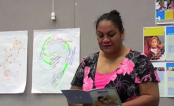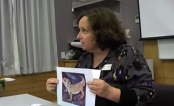Te Aho Arataki Marau mō te Ako i Te Reo Māori - Kura Auraki
Curriculum Guidelines for Teaching and Learning Te Reo Māori in English-medium Schools: Years 1-13
Curriculum guidelines 521 PDF (PDF, 4 MB)
Page navigation:
He akoranga whakawhiti reo
A communicative way of language teaching

Communicative language teaching is teaching that enables students to engage in meaningful communication in the target language.7 Such communication has a function over and above that of language learning itself. Any approach to language learning that enables students to communicate real information for authentic reasons and to perceive themselves as communicators is a communicative approach.
Communicative language programmes provide meaningful, authentic contexts in which students can encounter and practise the various aspects of successful communication. Successful communication in a new language involves more than knowing and using correct grammar and vocabulary. It requires learners of a language to develop socio-linguistic competence, strategic competence, and discourse competence in that language.
- Socio-linguistic competence means the ability to produce the language that is appropriate in various social and cultural contexts and in interacting with different kinds of people.
- Strategic competence means the ability to sustain conversation, negotiate meaning and repair breakdowns in communication.
- Discourse competence means the ability to produce a variety of coherent spoken, written and visual texts that are characteristic of the language.
Students reach higher levels of competence in te reo Māori when they are actively engaged in the language, that is, when they are taking part in tasks related to topics that they find genuinely interesting and relevant. As students learn to use te reo Māori with increasing accuracy and appropriateness in relevant and meaningful contexts, their confidence and proficiency will grow.
As they move up through the curriculum levels, students will increasingly gain control of the language forms – words, sentence structures, text features – that they need to use to communicate real information in te reo Māori for authentic reasons.
| To encourage students to use te reo Māori for meaningful communication |
|
|---|---|
| Teachers ensure that: | Teachers encourage students to: |
|
|
|
|
|
|
|
|
|
|
|
|
|
|
Footnotes
7 This section and the one that follows include specialist language learning terms that may not be familiar to all readers. They are explained in context here and also defined in Appendix 1.




